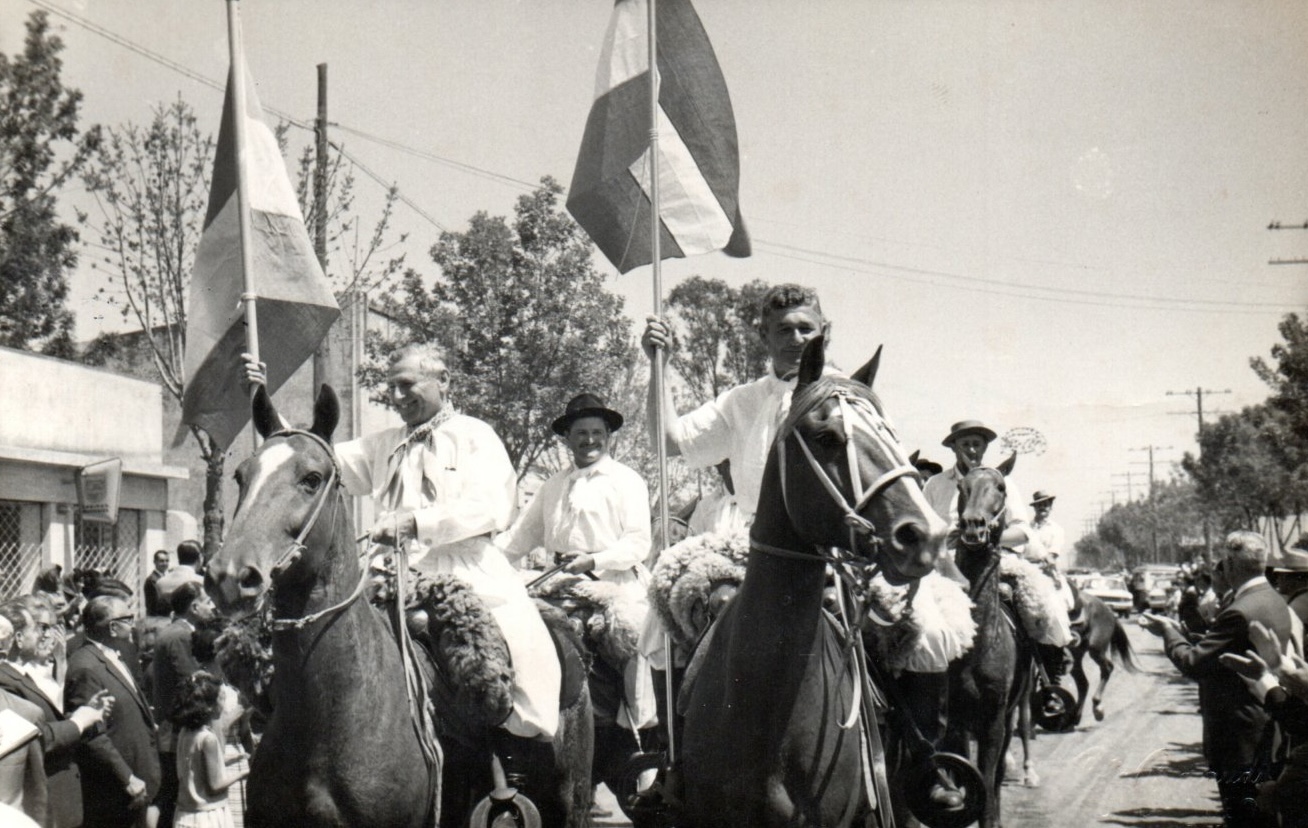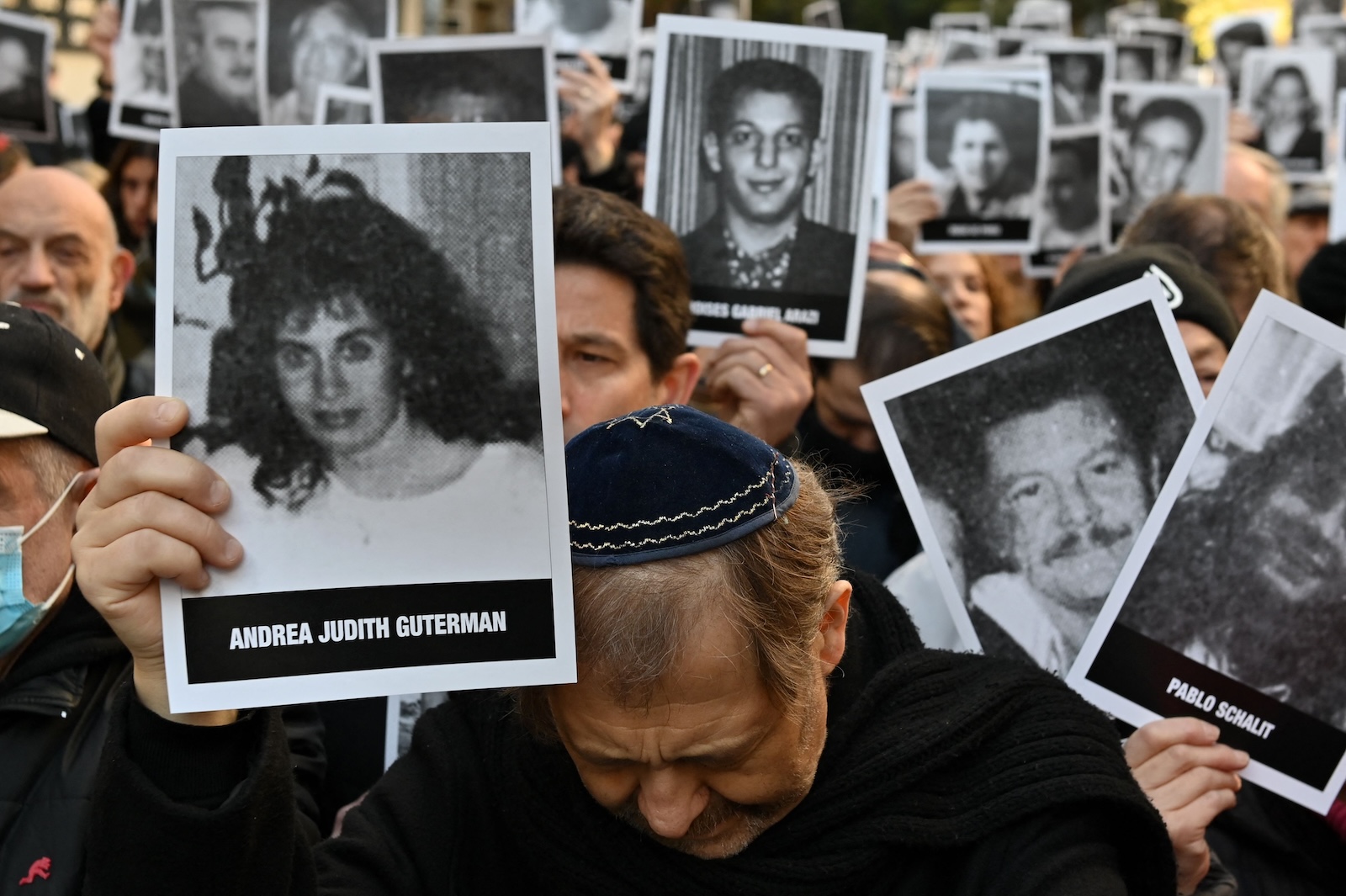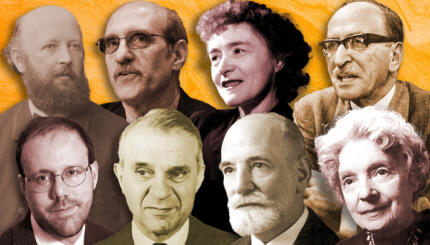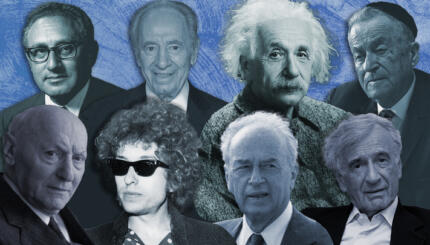In October 2023, Argentina elected a new president, Javier Milei, who had declared publicly that he was studying the Torah and was considering converting to Judaism. At the end of his inaugural address, he quoted from the Book of Maccabees, which recounts the story of how a small band of Jews liberated the land of Israel from the Syrian Greeks: “It is not on the size of the army that victory in battle depends, but on the strength that comes from Heaven.”
To both supporters and detractors of the far-right, libertarian politician, this was a clear demonstration that Jewish identity had become more publicly visible in Argentina than in any other Latin America country. To some extent, this should not have been a surprise. Argentina’s Jewish community of more than 200,000 is the largest in Latin America and the seventh largest in the world. But Argentina is also a country where antisemitism is persistent and where the Jewish community has struggled mightily through the economic and political upheavals of the 20th century.
The Argentine Jewish community traces its origin to the great wave of trans-Atlantic migration to the Americas that began in the second half of the 19th century and continued into the late 1920s. Jews constituted only a small minority of these immigrants, but alongside a large number of Italians and Spaniards, hundreds of thousands of Jews from Central and Eastern Europe, the Ottoman Empire and the Mediterranean region found a home in Argentina. Jewish refugees considered Argentina to be more developed and more European than its neighbors and therefore an attractive destination.
Spanish-speaking Jews from northern Morocco were among the first immigrants to Argentina, but the bulk of Jewish immigration was Ashkenazi. In 1862, a small group of French, German and English Jewish immigrants established the Ashkenazi Congregacion Israelita Argentina (CIRA) and inaugurated the first synagogue, known as the Libertad synagogue, in Buenos Aires. But the first important milestone in Jewish immigration came in 1881, when a group of 820 Russian Jews arrived in Buenos Aires fleeing a wave of antisemitic violence. These pioneers were sent to Jewish agricultural colonies established by the German Jewish philanthropist Baron Maurice de Hirsch to facilitate Jewish resettlement in the Americas. Some of their members founded in 1889 the colony of Moisesville, known as the “Jerusalem of Argentina” due to its rich Jewish life. Moisesville and other Jewish colonies were beautifully depicted by Alberto Gerchunoff in his 1910 novel Los Gauchos Judíos (The Jewish Gauchos of the Pampas), which was later made into a film and gave these early communities an almost mythic status in Argentine culture.

The number of Jews in Argentina grew rapidly in the decades that followed, from 14,700 in 1900 to 191,400 in 1930. The number reached 273,400 at the end of World War II and peaked at 310,000 in the early 1960s. The numbers grew despite Argentina’s unwillingness to open its gates to refugees fleeing fascist persecution in Europe. Nevertheless, some 40,000 Jews did enter Argentina, both legally and illegally, between 1933 and 1945. From the 1960s onwards, the number of Jews in Argentina began to decline amid political instability and multiple economic crises, with many emigrating to Israel, the United States, or to other countries in Latin America and Europe.
The vast majority of Jewish immigrants settled in Buenos Aires. Most were secular and maintained their ethnic identity through language, traditions brought from their country of origin, or political beliefs. Within a short time, Jews established a large number of institutions to meet their social, economic, educational and cultural needs. This rich institutional mosaic reflected a wide variety of faiths, identities and social practices. Communist institutions existed alongside Zionist ones. Sephardic and Ashkenazi Jews had their respective places of worship. All were able to elaborate unique individual and group hybrid identities as both Argentines and as Jews.
By the mid-20th century, many Jewish-Argentines had risen to prominent positions in social, economic, artistic and political spheres, but they were not universally welcomed. Growing nationalism, authoritarianism and xenophobia, particularly from the 1930s on, regarded Jews as undesirable. The over-representation of Jews in left-wing movements — first in anarchist circles and then in the ranks of the socialists and communists — gave cause for portraying Jews as corrupting elements in Argentine society.
In 1919, Jews were the targeted during the Buenos Aires pogrom known as the Tragic Week, in which repression of labor unrest was accompanied by a series of violent acts against the rusos — that is, the Jewish immigrants from Eastern Europe identified as revolutionaries because of their origins and faith. In the early 1960s, extreme right-wing militants exploited the kidnapping of the Nazi war criminal Adolf Eichmann by Israeli agents to accuse the Jews of dual loyalty and to carry out a series of violent antisemitic attacks. This wave of antisemitism provoked a panic among Jewish Argentines and, for the first time, substantial emigration to Israel.
Since then, antisemitic propaganda has sometimes been couched as anti-Israel or anti-Zionist discourse. Conspiracy theories about Israeli plans to occupy parts of Patagonia in order to establish a second Jewish state were spread widely and still figure prominently in Argentine social media.
Government-sponsored antisemitism was evident under the brutal military dictatorship that ruled the country in the 1970s. Though Jews made up only about one percent of the population, they were ten percent of the desaparecidos, the disappeared persons killed or jailed by the military junta to suppress left-wing political groups in which Jews were disproportionately represented. But Jewish community institutions largely continued with their activities as normal during this period. No antisemitic laws were enacted and government relations with Israel were excellent.
The return of democracy in the early 1980s witnessed the adoption of a tolerant policy toward ethnic minorities and a growing awareness of the multicultural nature of Argentine society. Jewish Argentines were prominent in all spheres of life, from footballers Juan Pablo Sorin and Jose Pekerman, to musicians Daniel Barenboim and Martha Argerich, to comedian Tato Borres and film director Daniel Burman. Argentine Jews have also served in senior government positions. Carlos Corach was minister of the interior in the 1990s and Hector Timmerman served as foreign minister from 2010 to 2015.
Nevertheless, the success of individual Jews did not signal the complete disappearance of antisemitism or even its occasional violent manifestations. The worst incident came in 1994, when a car bomb exploded in front of the AMIA Jewish community center building in the center of Buenos Aires, killing 85 people and wounding hundreds. Although the terrorists responsible for the attack were assumed to be Islamists directed by Iran, it was understood that they could not have committed their crime without local assistance. Consequently, the attack triggered deep questioning among Argentine Jews about their identity and their place in Argentine society.

Another crisis hit the community with the onset of the worldwide financial crisis of 2008, sparking widespread Jewish poverty. The crisis boosted the influence of the Chabad movement in Argentina, which offered assistance to Jews in need. Notably, the crisis did not provoke any antisemitic reactions. Nor has the economic debacle of the 2020s, when Argentina suffered from high rates of inflation. Argentine society remains deeply polarized, but while antisemitic sentiments are not rare, this is not a major concern for Jewish-Argentines.



